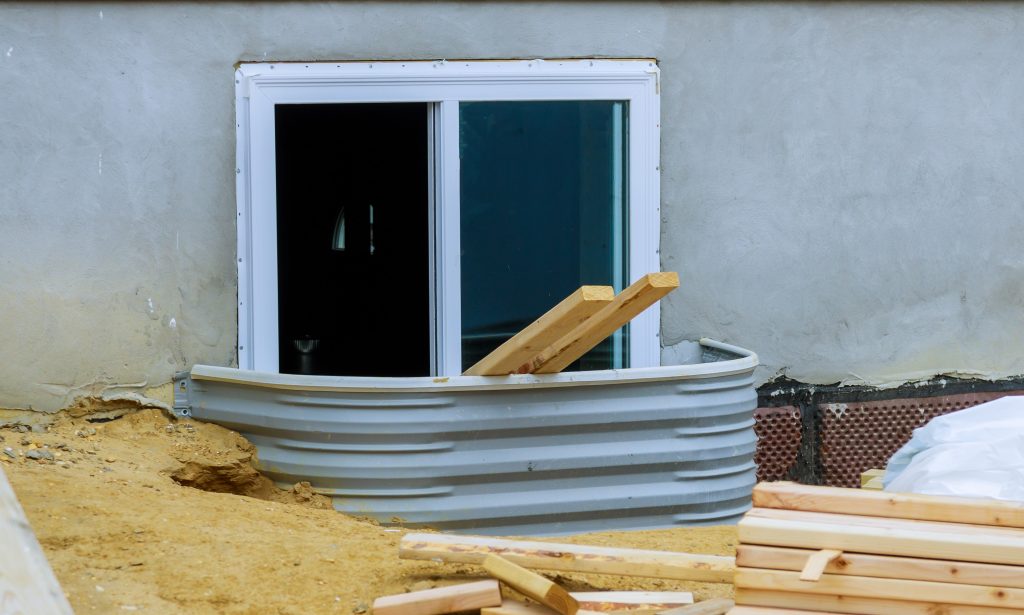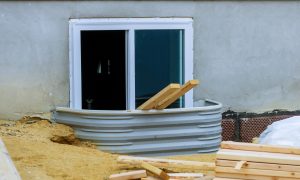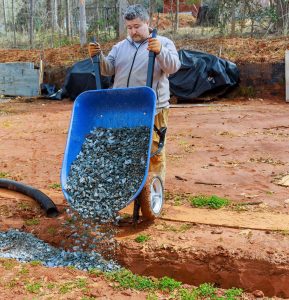Window Well vs French Drain: 5 Essential Insights for Homeowners

Basement water is stressful. It ruins finishes, brings odours, and puts your investment at risk. Most issues in London, Ontario trace back to two weak points: water that builds up inside a window well, and water that saturates soil around foundation walls.
The challenge is picking the fix that matches your problem. This guide explains when window well installation is enough, when a french drain installation solves the bigger issue, and when both together give the best result.
How Water Actually Enters a Basement

Water always follows the easiest path. Around homes that path is usually either:
- Window-level entry. Water gathers in a shallow or clogged well, then leaks through frames or cracks.
- Wall or floor seepage. Saturated soils push moisture through hairline cracks or the floor-wall joint.
If you can spot which path the water takes, you can select the right fix and avoid paying twice.
What Window Well Installation Really Does
A window well is more than a metal ring. It’s a small system that holds back earth, keeps the window clear, and gives water a route down to a safe outlet.
The parts that matter
- Rigid well, anchored to the foundation to resist soil pressure.
- Washed drainage stone (6–8 inches) for a free-draining base.
- Filter fabric to stop fines from clogging the stone.
- Drain path tied to footing level or another suitable outlet so the well can’t “bucket fill.”
- Clear cover (optional) to shed rain and debris and reduce maintenance.
A proper assembly keeps the area in front of the window dry and prevents overflow during storms.
Common failure points (and quick fixes)
- Shallow wells. If the well lip sits below sill height, water finds the frame; install a taller well to match the window.
- Clogged stone. Leaves and soil reduce flow; clear debris and refresh stone as needed.
- Downspouts too close. Extensions of 2–3 metres reduce the load on wells and walls.
No outlet. Without a path down to footing level or a safe drain, wells hold water. Add a vertical drain and connect correctly.
When French Drain Installation Is the Smarter Fix
A French drain is a trench with a perforated pipe bedded in gravel and wrapped in fabric. It picks up water before it presses against your foundation and moves it to a safe discharge point.
Signs you need a drain
- Puddles that linger near the house after rain.

- Spongy lawn or soft soil along foundation lines.
- Damp lines or efflorescence on interior walls.
- Seepage at the floor-wall joint during storms or spring melt.
Safe discharge and local practice
A drain only works if it discharges safely—ideally to daylight, a storm swale, or another approved point. Keep roof water on the surface and away from foundation drains, and never tie a French drain into a sanitary line. Good drainage is a system, not a single pipe; the broader industry continues to refine best practice for performance and maintenance (see the International Water Association’s editorial on drainage system management advances: https://iwaponline.com/wst/article/87/7/iii/94578/Editorial-Advances-in-drainage-system-management).
Why Many Homes in London Need Both Systems
Often, yes—especially on clay-rich lots or where grading pushes runoff toward the home.
- Window wells protect the vertical opening at each below-grade window.
- French drains lower the water table around the house and intercept runoff before it reaches the wall.
Using both builds redundancy, reduces hydrostatic pressure and splash-in at windows, and brings down long-term maintenance. When budget is tight, fix the biggest risk first (for example, a well that overflows into a finished room), then add the second layer if seepage persists.
Quick Homeowner Assessment
Walk the property right after a rainfall and note:
- Are there puddles within a metre of foundation walls?

- Do wells hold water or soil against the frame?
- Are downspouts extended 2–3 metres and aimed to grass or garden?
- Any musty odours or flaking paint lines inside along the bottom of walls?
- Does the basement feel humid for hours after rain?
Two or more “yes” answers point to a combined issue: address windows and soil saturation together.
Window well steps in plain language
- Excavate to below the window base and clean the wall surface.
- Set the well tight and anchor to the foundation.
- Add washed stone and filter fabric to keep the base free-draining.
- Create a drain path to footing level or a suitable outlet so the well can’t fill.
- Finish with a cover to keep out rain splash and debris.
- Check downspouts and nearby grade so surface water isn’t directed toward the well.
French drain steps in plain language
- Lay out a trench that slopes to daylight or another storm-safe outlet.
- Install fabric along the trench, add gravel, set a perforated pipe holes-down unless specified otherwise.
- Wrap the pipe and backfill with stone, then soil, maintaining slope.
- Add cleanouts at ends or corners for future maintenance.
- Confirm discharge does not overload other systems and remains legal and safe.
Address surface grading so the drain is not forced to carry avoidable roof runoff.
Long-Term Value: Protection, Resale, and Peace of Mind
Pricing depends on depth, access, and length. As a general rule:
- Window wells are usually a smaller line item per unit but need correct drainage to avoid repeat work.
- French drains involve longer trenches and more aggregate, so they cost more, yet they treat the root cause when soils stay saturated.
- Combined systems cost more up front but can prevent repeated repairs, flooring replacements, and mould clean-ups.
From a resale angle, documented drainage upgrades and a dry basement inspection give buyers confidence. For finished basements, proactive drainage is often cheaper than even one major water incident.
Simple Maintenance to Keep Things Dry
- Clear wells of leaves and soil each season; check that stone remains free-draining.
- Clean gutters twice a year so downspouts don’t overflow next to wells.
- Keep extensions on, especially during spring melt and fall storms.
- Walk the grade—soil should slope away from the house by at least a few centimeters over the first two metres.
- Test cleanouts on French drains annually to confirm flow.
Small habits keep the system effective and extend the life of finishes inside.
Your Next Steps in London, Ontario
Not sure which fix fits your home? Start with a site visit. A local assessment will confirm soil type, grading, and safe discharge, then map the shortest path to a dry, comfortable basement.
- Learn more about French drains → https://www.ashworthdrainage.ca/services/french-drains/
- Ready to talk? Contact Ashworth Drainage → https://www.ashworthdrainage.ca/contact/
Disclaimer: Every property is unique. The guidance above is general and does not replace an on-site assessment by a qualified contractor.
FAQs
Do window wells need their own drain?
Yes. Without a path to footing level or another outlet, a well can fill and leak through the frame.
Will a French drain stop every leak?
It reduces soil saturation and hydrostatic pressure, which often stops wall seepage. If water enters through windows, you still need proper window well work.
Can I connect a French drain to the sanitary sewer?
No. Drains must discharge to approved storm points or daylight, not sanitary lines.
What’s the best first step if I’m unsure?
Book a property assessment. A pro will trace the entry path, check grading, and recommend the right order of fixes.
Is a cover necessary on every window well?
Covers reduce splash-in and debris. They’re not a substitute for drainage but they lower maintenance.
